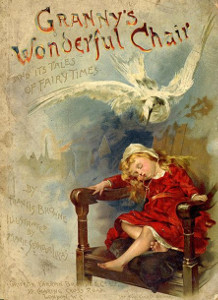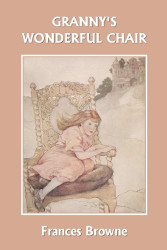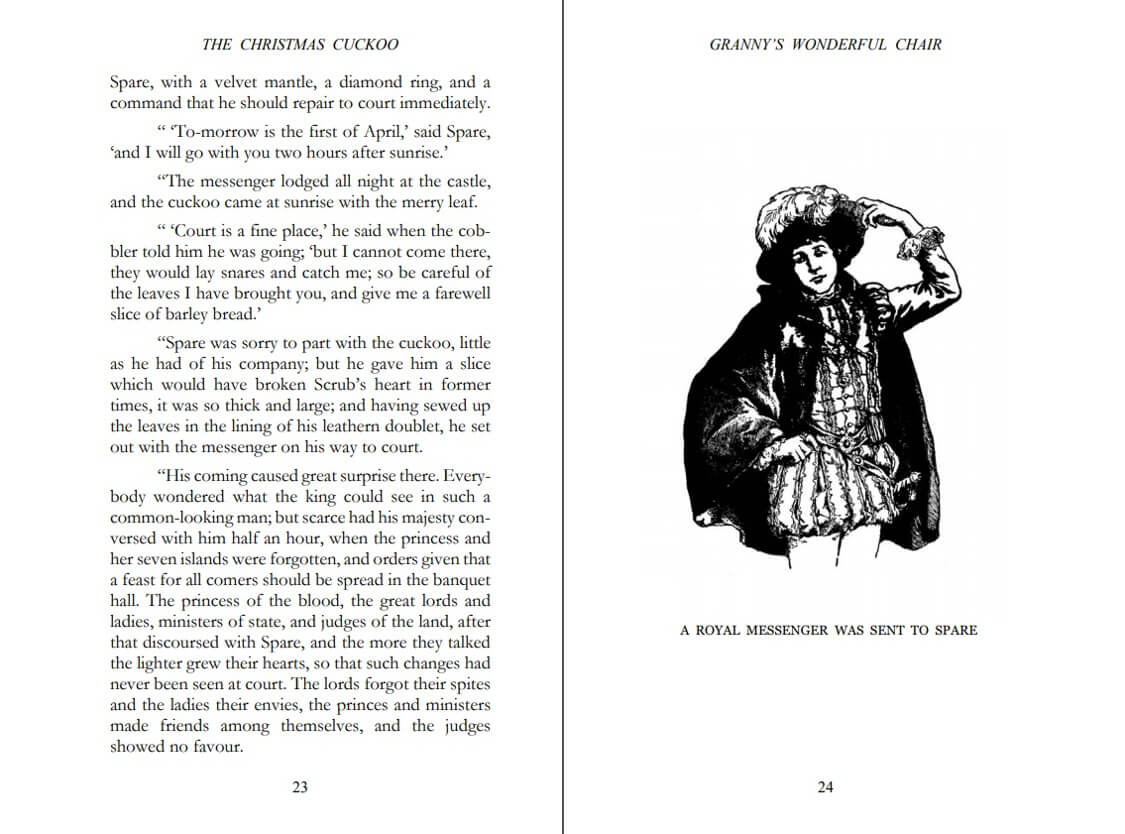Granny's Wonderful Chair

E.P. Dutton 1891 Edition
Author:
Frances Browne
Publication:
1856 by
Genre:
Anthology, Fairy Tales, Fiction, Folk Tales
Current state:
Basic information has been added for this book.
It has been read but content considerations may not be complete.
Book Guide
Search for this book used on:
After writing several novels which were reasonably successful Frances Browne turned her mind to the writing of stories for children. None of these, however, compared with the remarkable story of the present volume, for it has minutely described scenes which were imagined by a writer who could see nothing with any eyes but those of the mind, for she had been blind since birth.
Irish-born and daughter of a village postmaster, Frances Browne—she was living with a sister in Edinburgh when she wrote her books—was fortunate in having the Irish fairy-stories of her childhood to lead her into their gossamer-strewn ways, to touch her fancy with their magic, and to colour the whole of Granny's Wonderful Chair. Here each story in the book makes a complete picture, and the pictures are kept in their places, pinned down to reality by delightful touches of humour. Of the wonderful chair Dame Frostyface says in the beginning of the story: "it was made by a cunning fairy who lived in the forest when I was young, and she gave it to me because she knew nobody would keep what they got hold of better." How did a writer who had never seen a coach or a palace, or the picture of a coach or palace, tell of these things? Whence came her vision of the old woman who weaved her own hair into grey cloth at a crazy loom: of the fortified city in the plain, with cornfields and village; of floors of ebony and ceilings of silver? Had her descriptions been borrowed, the wonder of them would cease. But her words are her won, and they are used sparingly, as by one who sees too vividly what she is describing to add on unnecessary or indistinct touch. From the dust jacket of the Children's Illustrated Classics edition of Granny's Wonderful Chair published by J.M. Dent and Sons
To view an example page please sign in.
Resource Guide
Episode 70: Why Read Fairy Tales?
Released in 2020 by The Literary Life
Available formats: Streaming Audio
Length: 1 hr. 29 min.
View on the The Literary Life site
"Angelina Stanford and Cindy Rollins tackle the topic of fairy stories, discussing the what, why and how of reading them. Angelina shares the distinctive characteristics of fairy stories in contrast to other types of stories, such as myths. They deal with the question of whether fairy tales are 'escapist', the influence of the Grimm brothers scholarly work on interpreting fairy stories, and allowing the story to unveil its deeper truths without forcing meaning onto it.
Angelina gives an illustration of how to see the gospel messages in fairy tales by talking us through the story of Sleeping Beauty. She refutes the ideas that fairy tales are about human romance or are misogynistic. She also highlights some of the Enlightenment and Puritan responses to fairy tales that still linger with us today. Cindy and Angelina also discuss some common concerns such as the magical, weird, or scary aspects of fairy tales. Angelina also makes a distinction between folk tales, literary fairy tales, and cautionary tales."
Find This Book
Search for this book used on:





